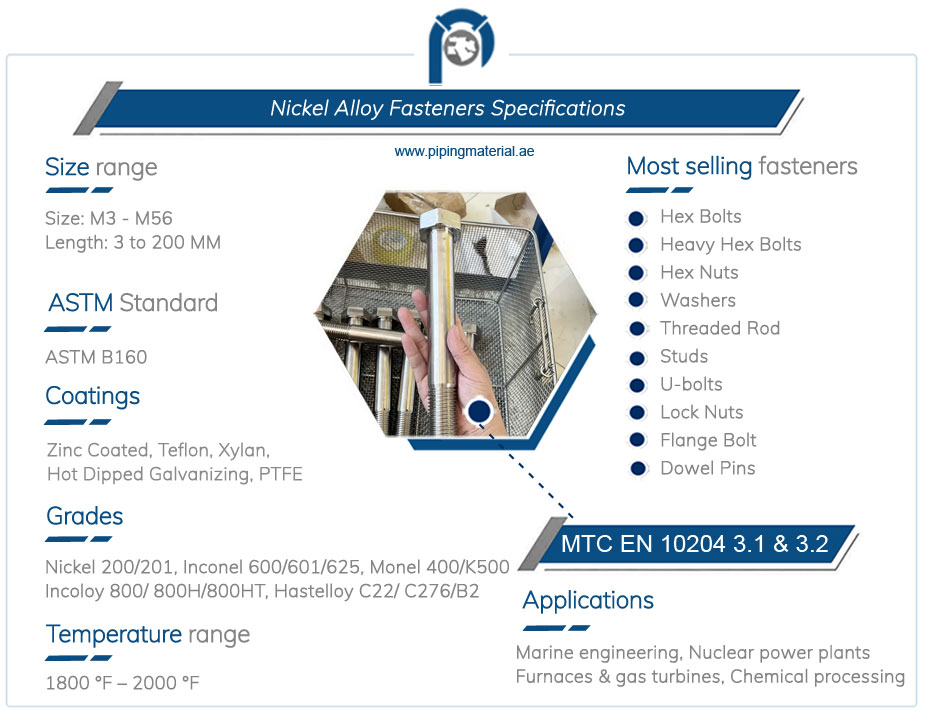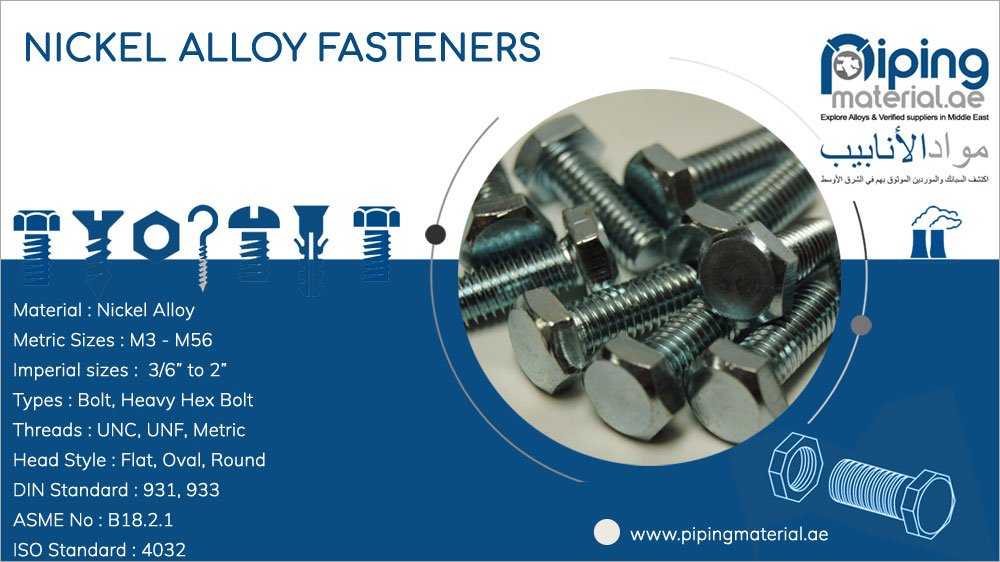A Comprehensive Guide to Aluminum Welding Rods and Nickel Alloy Fasteners
Introduction:
In the world of metalworking, the proper selection of welding rods and fasteners is crucial to ensure the structural integrity and longevity of projects. Two widely used materials in various industries are aluminum and nickel alloy. In this blog post, we will delve into the specifics of aluminum welding rods and nickel alloy fasteners, exploring their characteristics, applications, and best practices for their use.
Aluminum Welding Rods: Aluminum welding rods, also known as aluminum filler rods or aluminum electrodes, are consumable electrodes specifically designed for welding aluminum. These rods play a vital role in joining aluminum pieces, offering excellent conductivity, strength, and corrosion resistance. They come in various forms, including bare rods, flux-coated rods, and solid core rods, each suited to specific welding techniques and applications.

Characteristics:
- High conductivity: Aluminum welding rods possess excellent electrical and thermal conductivity, making them ideal for applications where heat dissipation is crucial, such as in electrical components and heat exchangers.
- Lightweight: Aluminum is known for its low density, resulting in lightweight welding joints. This characteristic is advantageous in industries such as aerospace and automotive, where weight reduction is critical.
- Corrosion resistance: Aluminum naturally forms a protective oxide layer that resists corrosion. Proper selection of aluminum welding rods ensures the maintenance of this resistance, making them suitable for outdoor applications and marine environments.However, proper heat management is necessary to prevent distortion or burn-through of the workpiece.
Applications: Aluminum welding rods find applications in a wide range of industries, including:
- Automotive: Welding aluminum is common in the production of vehicles, especially in body panels and frames, due to its lightweight and corrosion-resistant properties.
- Aerospace: Aluminum welding rods are extensively used in the aerospace industry for manufacturing aircraft components, such as wings, fuselages, and fuel tanks.
- Construction: Aluminum is employed in architectural structures, windows, and doors due to its durability and aesthetic appeal. Welding rods help create strong and seamless joints in these applications.
- Marine: Given aluminum’s resistance to saltwater corrosion, welding rods are used in boat building, shipyards, and offshore structures.
Best Practices: To achieve optimal results when working with aluminum welding rods, consider the following best practices:
- Cleanliness: Ensure the base metal is clean and free from oil, grease, and other contaminants. Use a stainless-steel wire brush or suitable solvent for cleaning.
- Proper heat control: Aluminum is a highly conductive metal, and excessive heat can cause warping or burn-through. Practice proper heat management to avoid these issues.
- Joint preparation: Proper joint design and preparation are critical for successful welding. Bevel or groove the edges, and remove oxide layers before welding to ensure good penetration and adhesion.
- Shielding gas: Use appropriate shielding gas, typically a mixture of argon and helium, to prevent atmospheric contamination and achieve quality welds.
Nickel Alloy Fasteners: Nickel alloy fasteners are high-strength, corrosion-resistant fastening solutions used in demanding applications that require resistance to extreme temperatures, pressure, and aggressive chemicals. Nickel alloys are renowned for their exceptional strength, ductility, and resistance to both oxidizing and reducing environments.

Characteristics:
- High temperature resistance: Nickel alloys exhibit excellent resistance to high temperatures and thermal cycling, Nickel alloy fasteners making them suitable for applications in gas turbines, heat exchangers, and petrochemical plants.
- Corrosion resistance: Nickel alloys provide outstanding resistance to corrosion, particularly in harsh environments, such as marine, chemical processing, and oil and gas industries.
- Mechanical properties: Nickel alloys offer a combination of high strength, toughness, and ductility, allowing them to withstand heavy loads and prevent deformation or failure.
- Compatibility: Nickel alloys are compatible with a wide range of materials, making them suitable for use in conjunction with other metals, including stainless steel and titanium.
Applications: Nickel alloy fasteners are used in various industries, including:
- Petrochemical and chemical processing: Nickel alloys are employed in equipment and pipelines that handle corrosive chemicals and operate at high temperatures and pressures.
- Power generation: Nickel alloy fasteners find applications in power plants, where they are exposed to extreme heat and demanding operating conditions.
- Oil and gas: Nickel alloys are used in offshore drilling rigs, subsea pipelines, and equipment exposed to corrosive fluids and harsh environments.
- Aerospace and defense: Nickel alloy fasteners are utilized in aircraft engines, missile systems, and military equipment due to their high strength and resistance to extreme conditions.
Conclusion:
Aluminum welding rods and nickel alloy fasteners offer unique properties that make them indispensable in various industries. Understanding their characteristics, applications, and best practices for their use enables professionals to make informed decisions when selecting these materials. Whether it’s achieving strong and durable welds with aluminum or ensuring reliable fastening solutions with nickel alloys, these materials contribute significantly to the success and longevity of numerous projects across multiple sectors

Recent Post
What Skills Can You Develop in a Wine Workshop?
July 20, 2024
What are the advantages of the best infant car seats?
July 20, 2024



